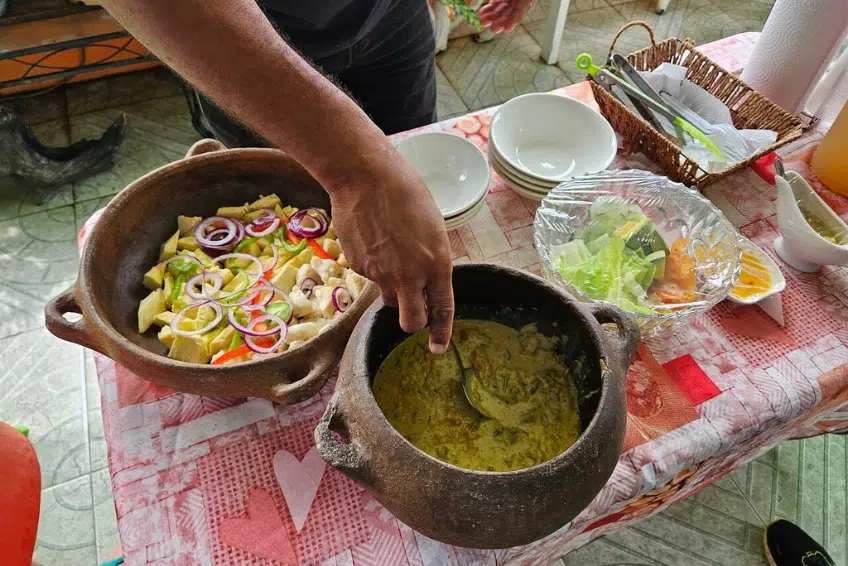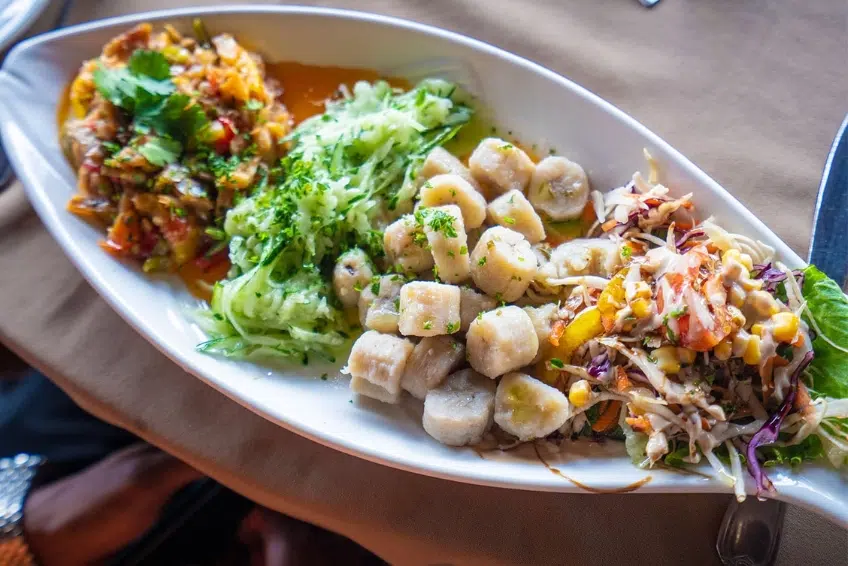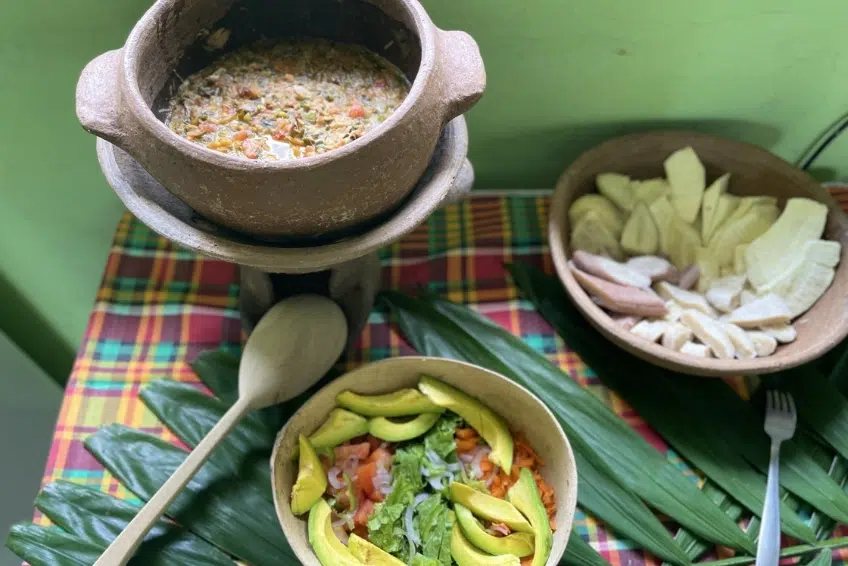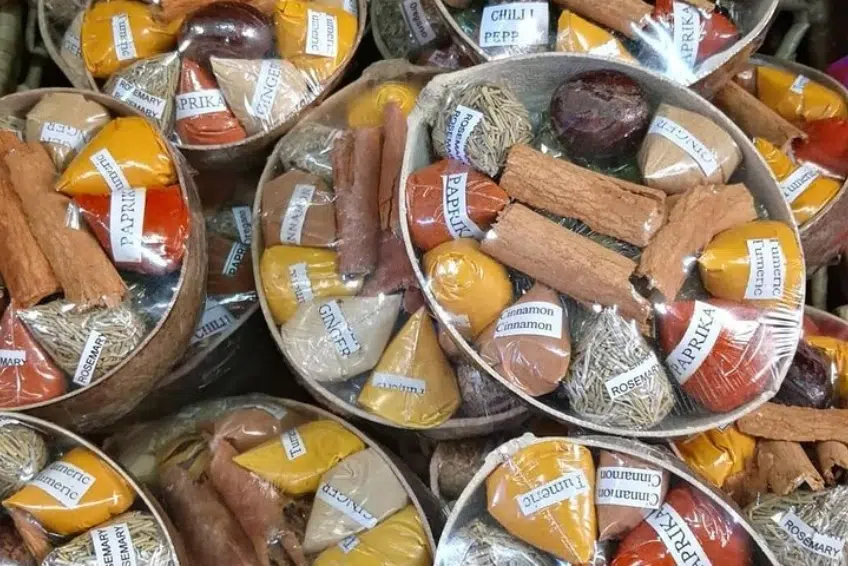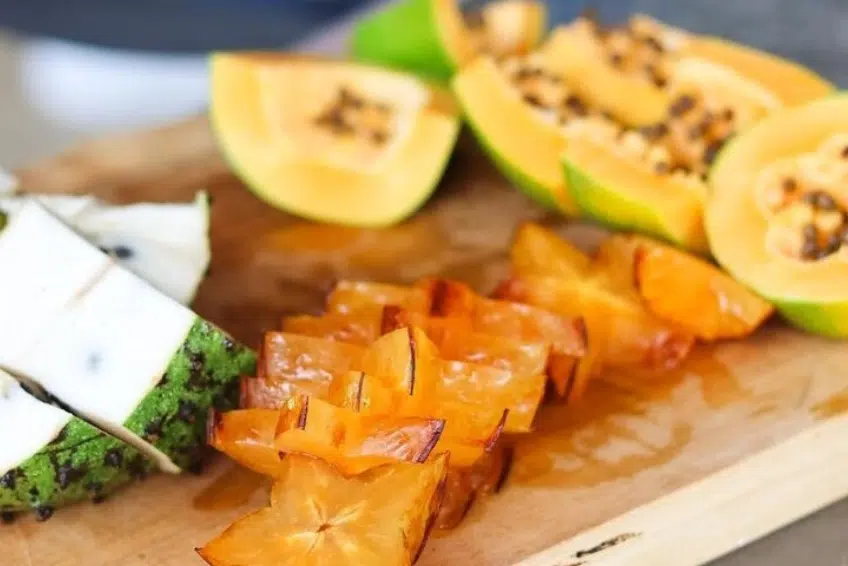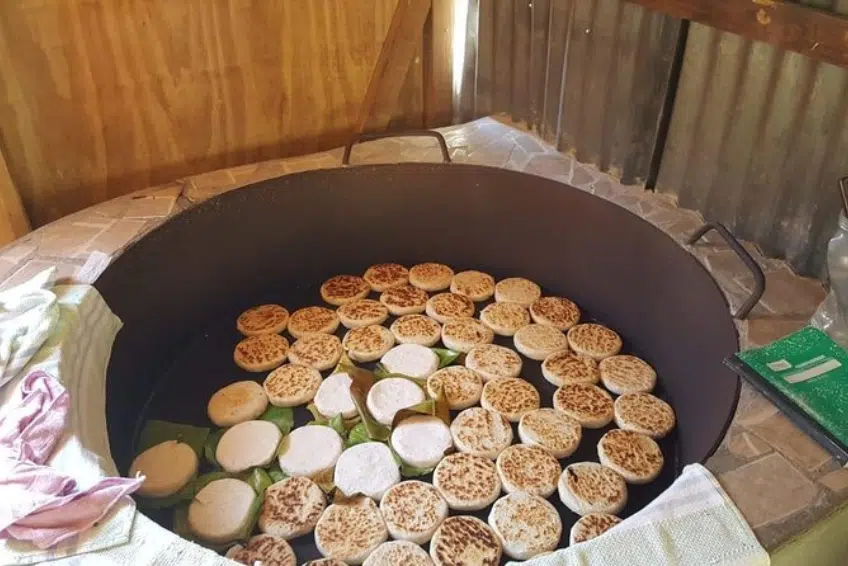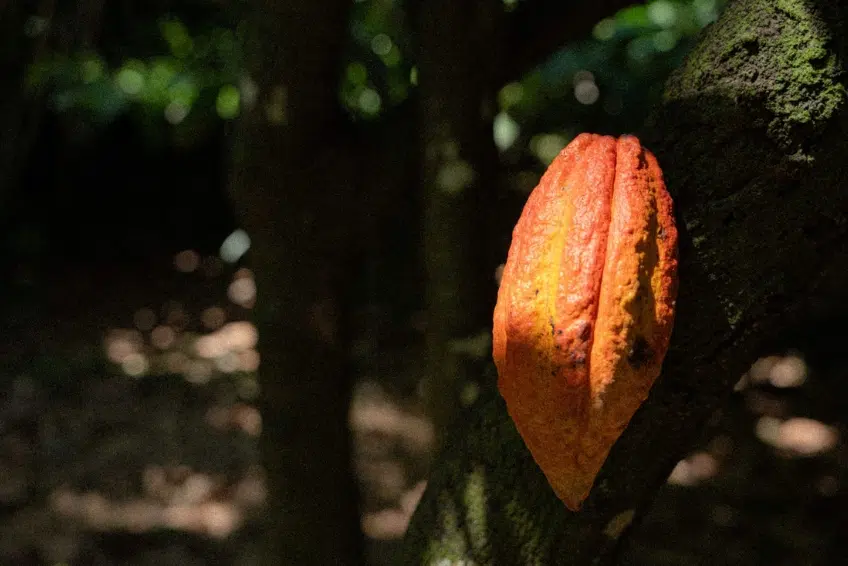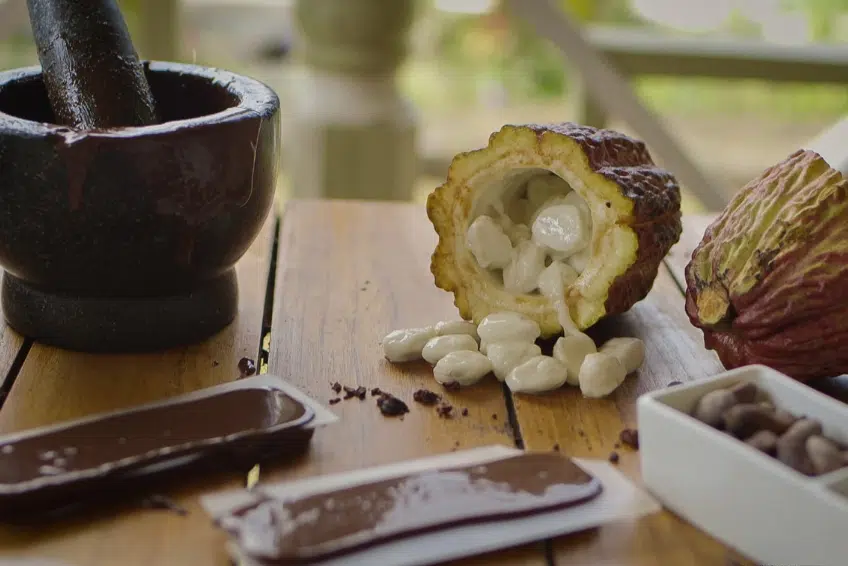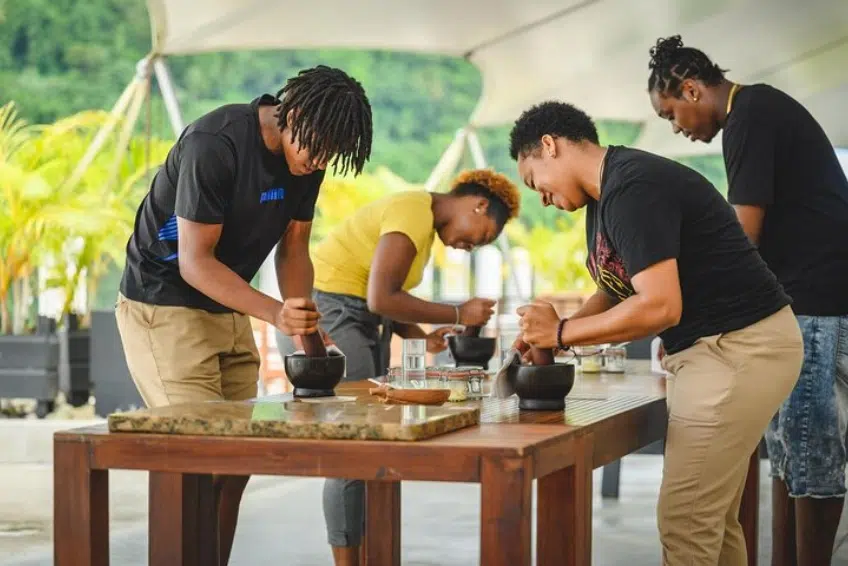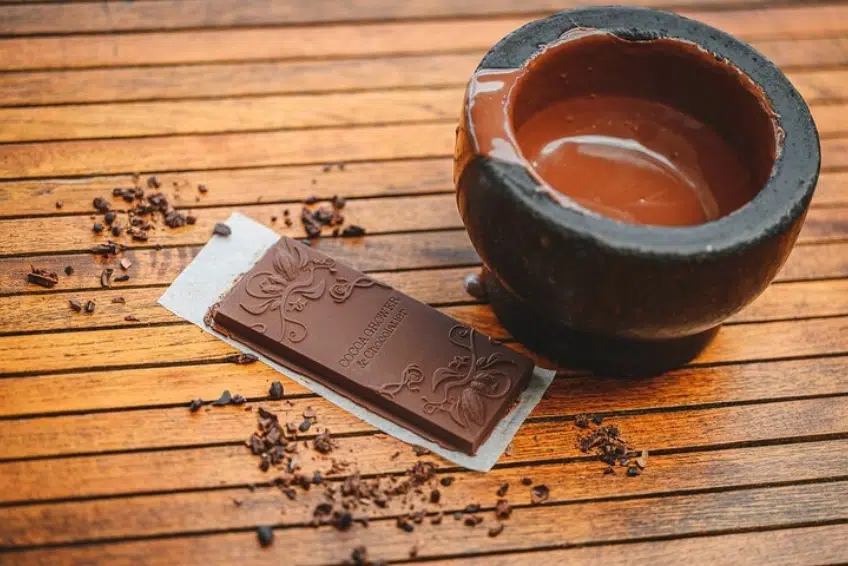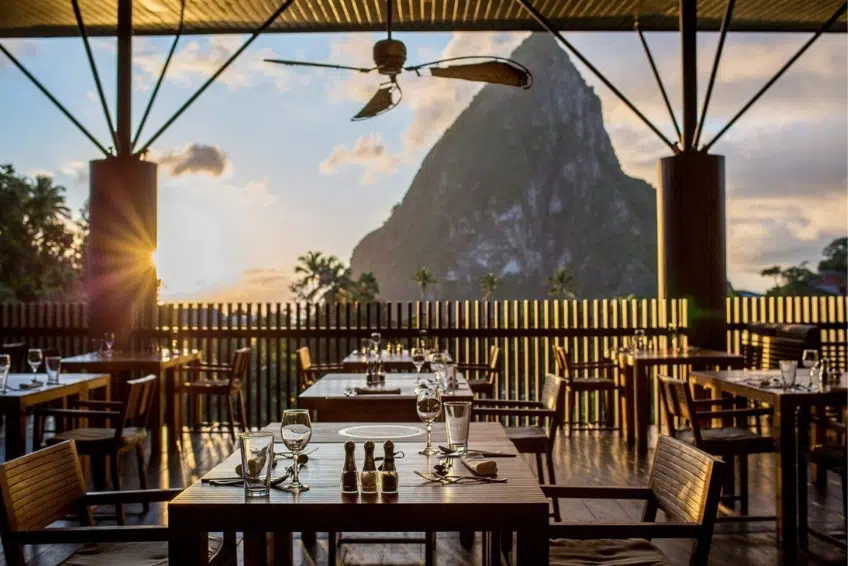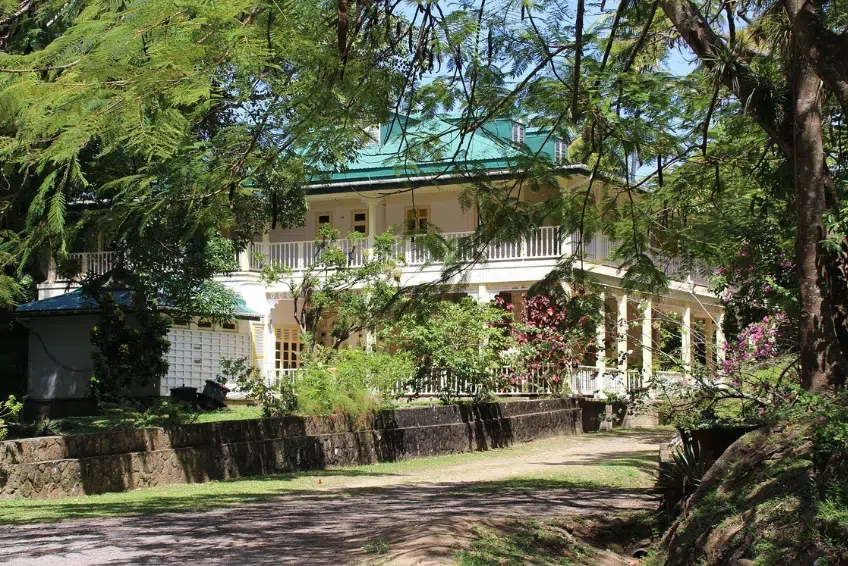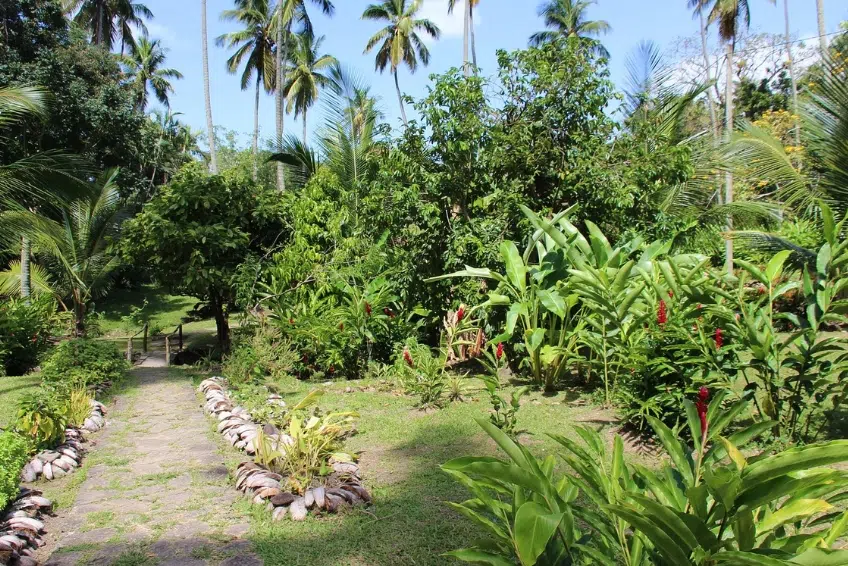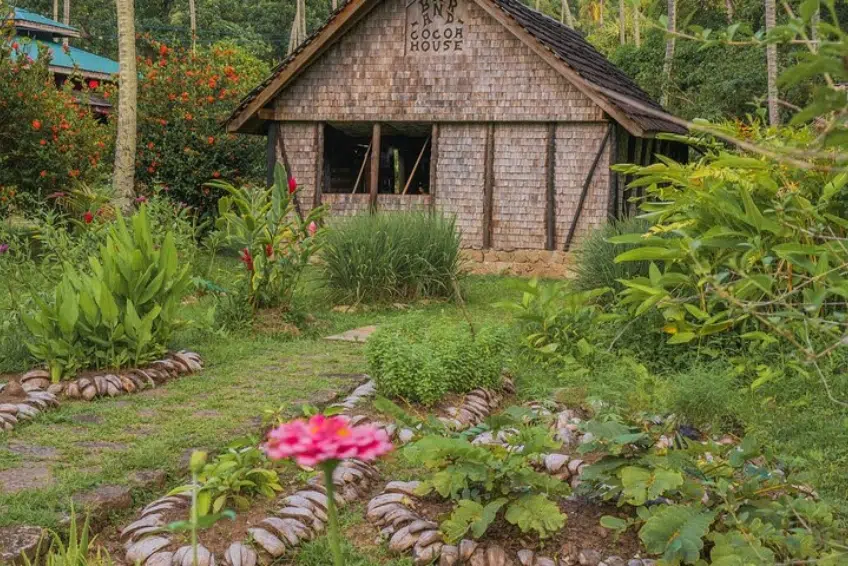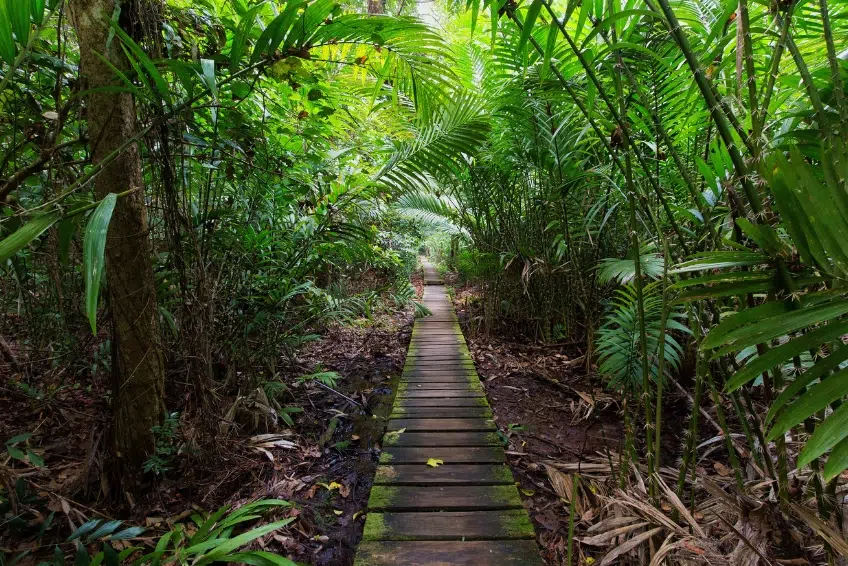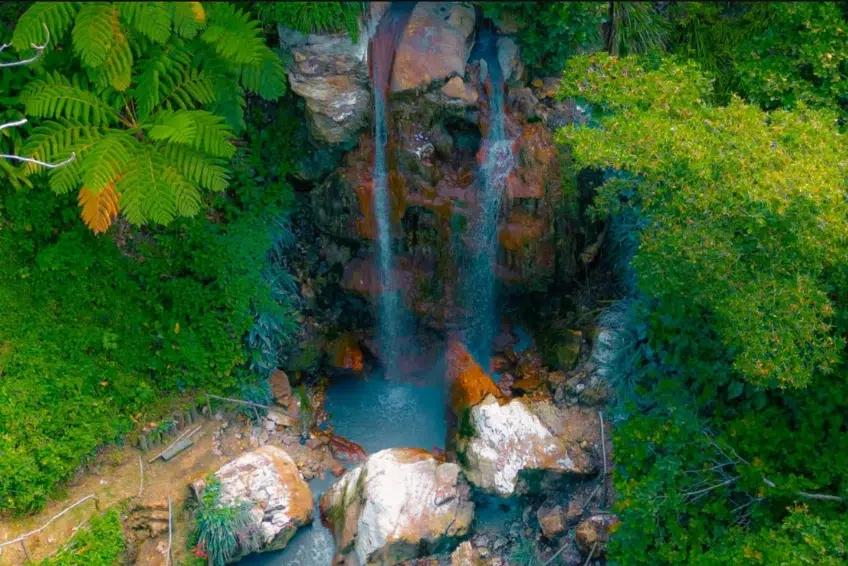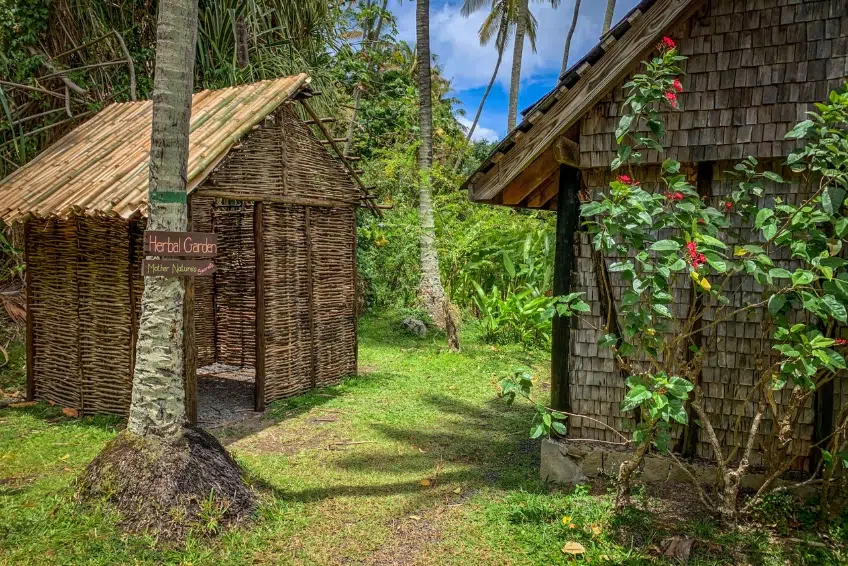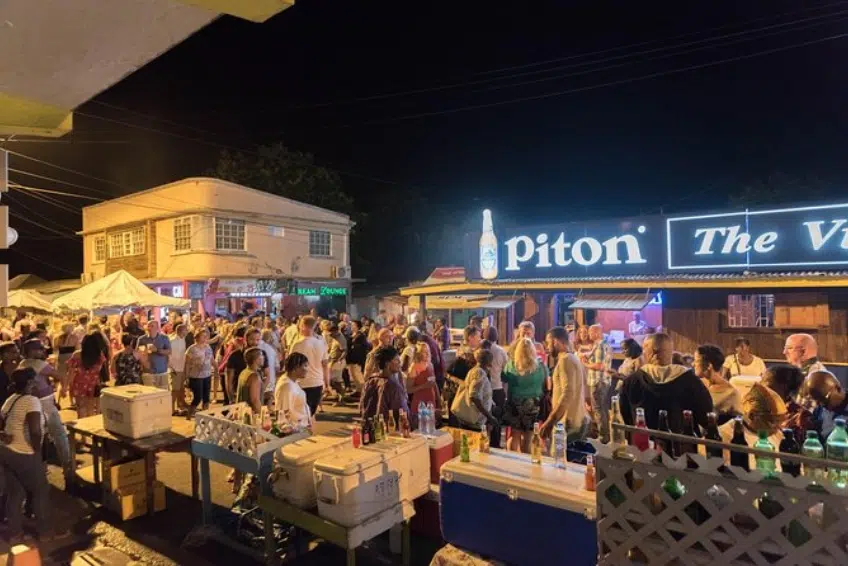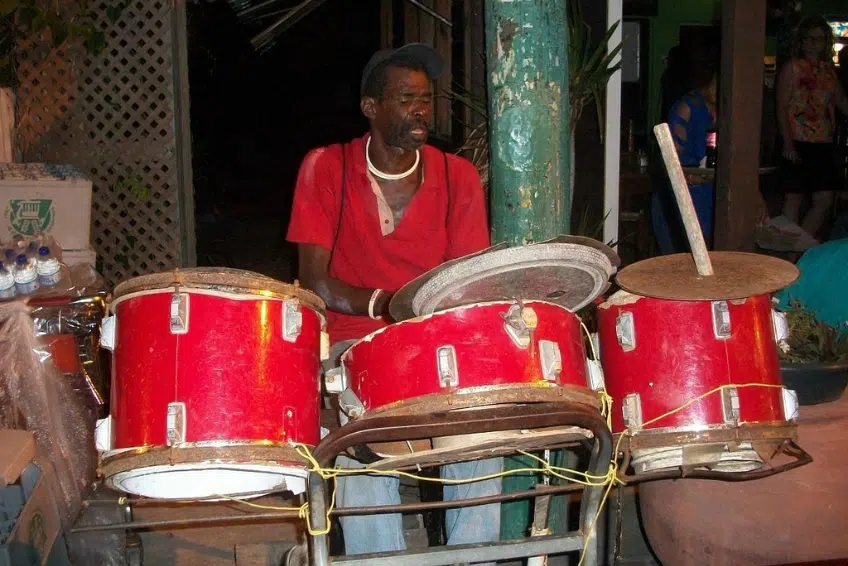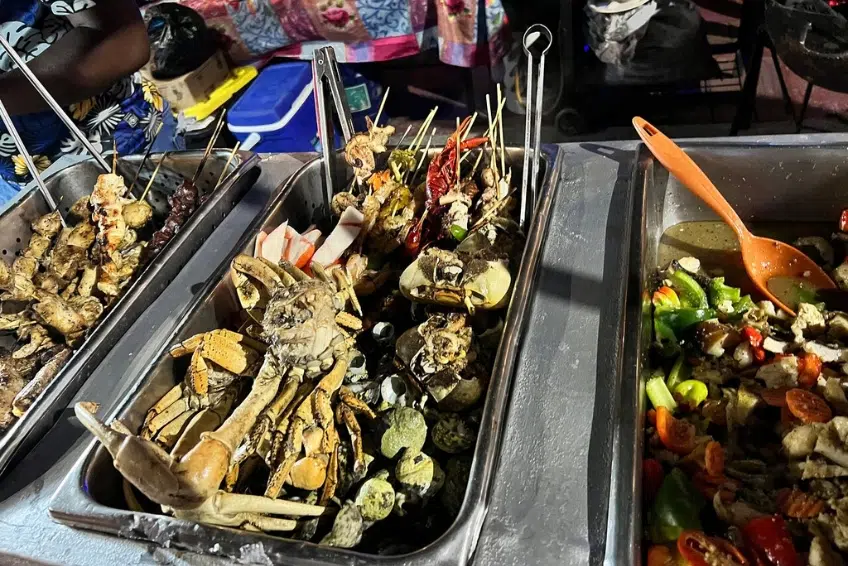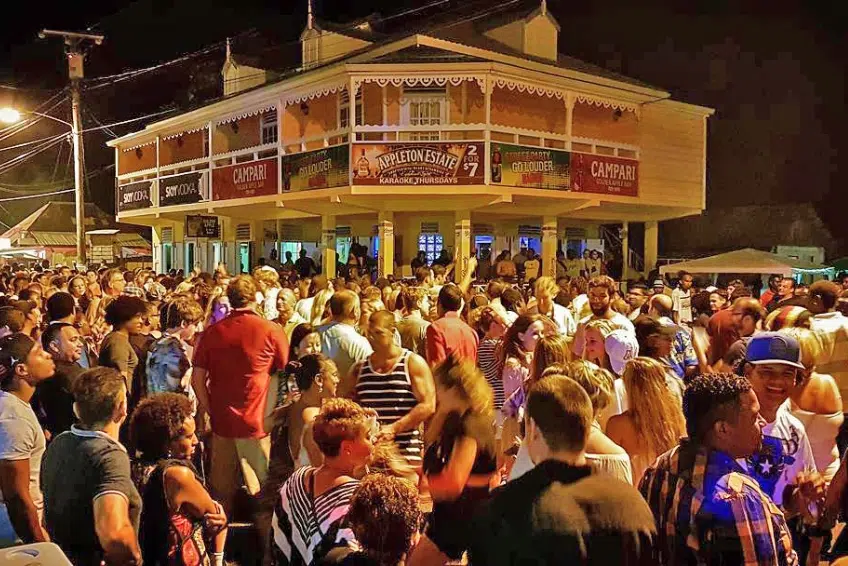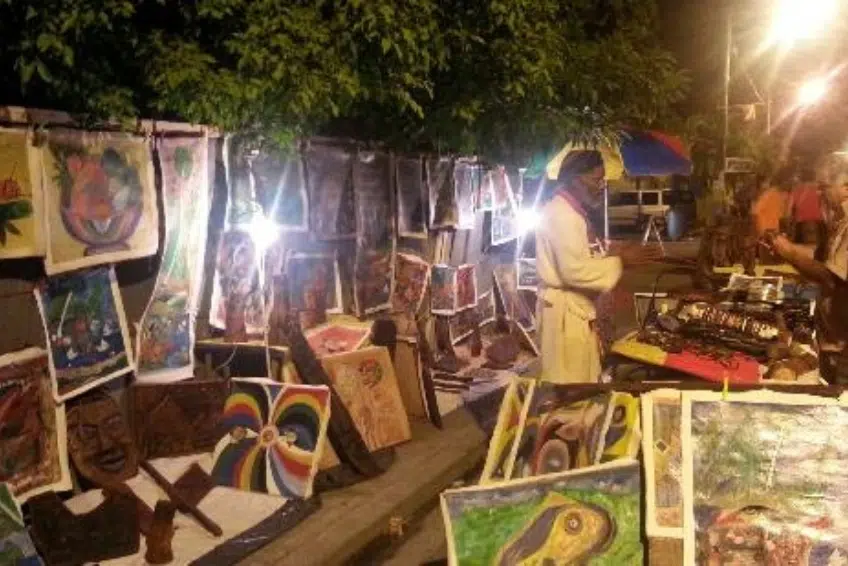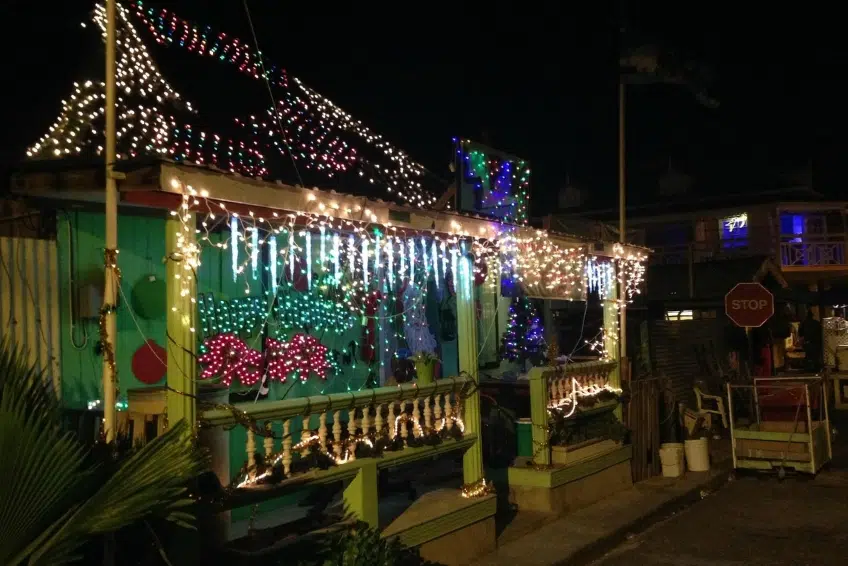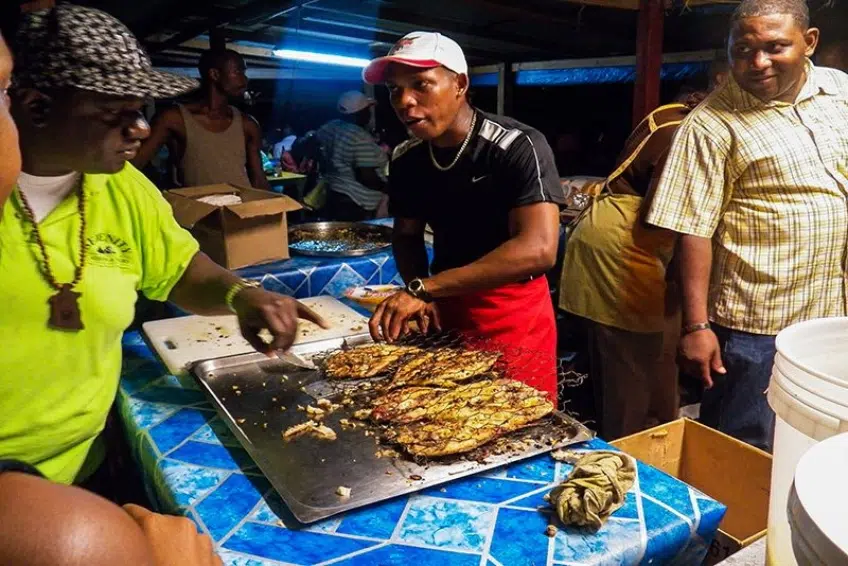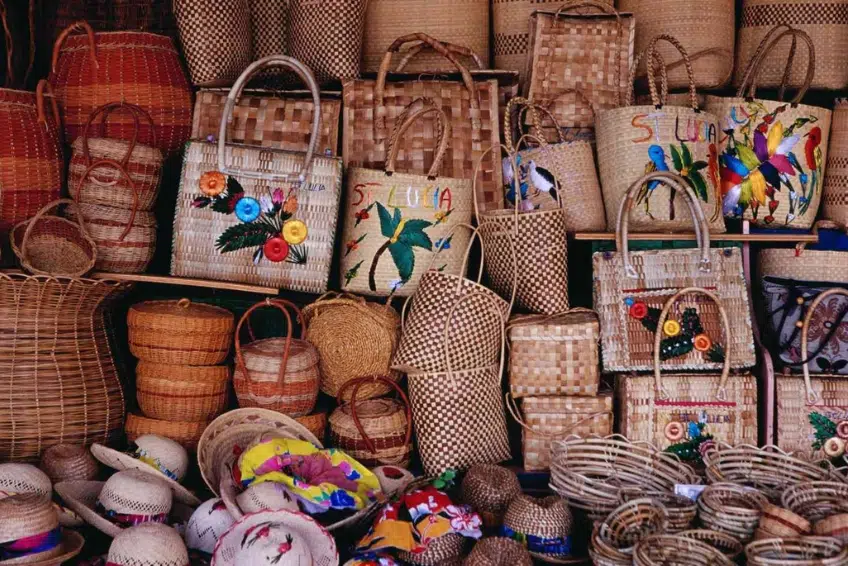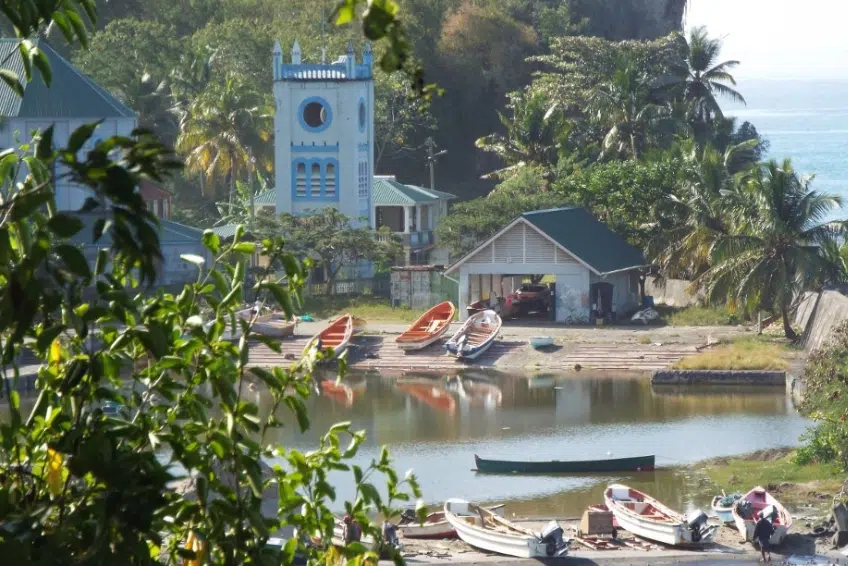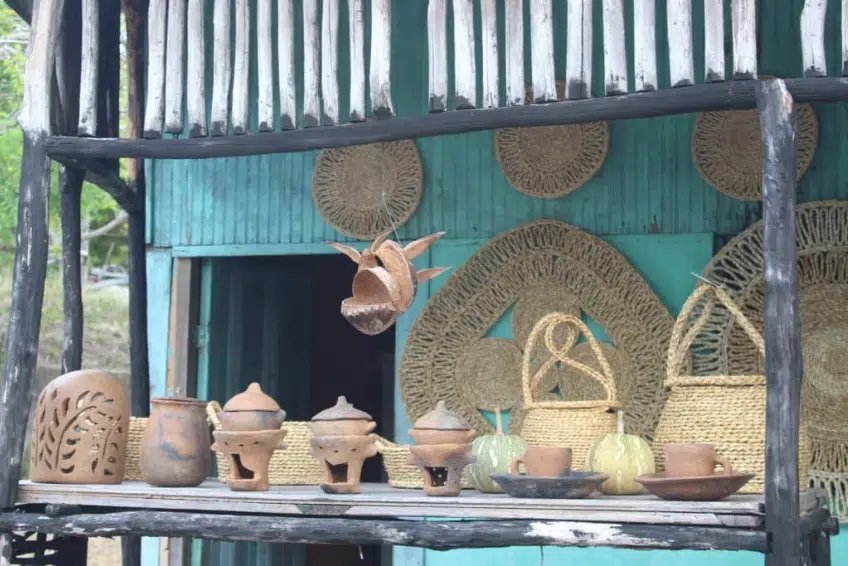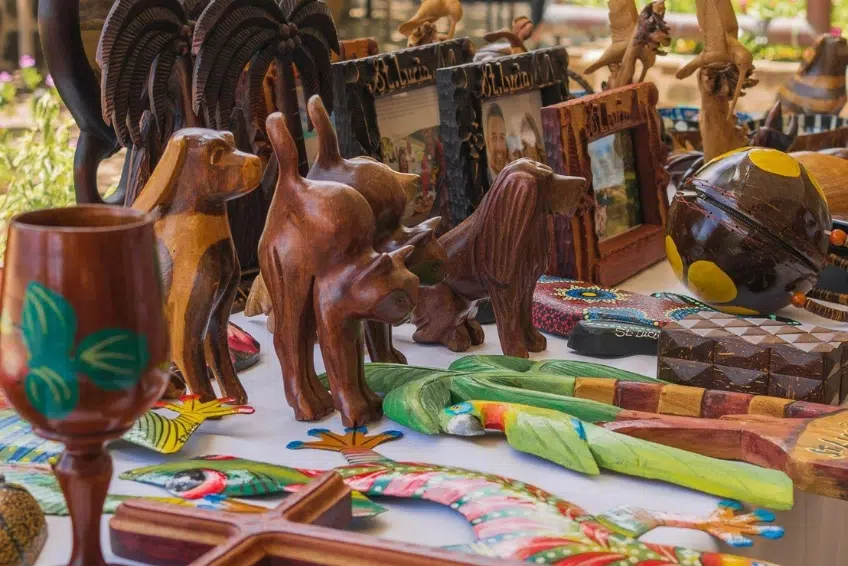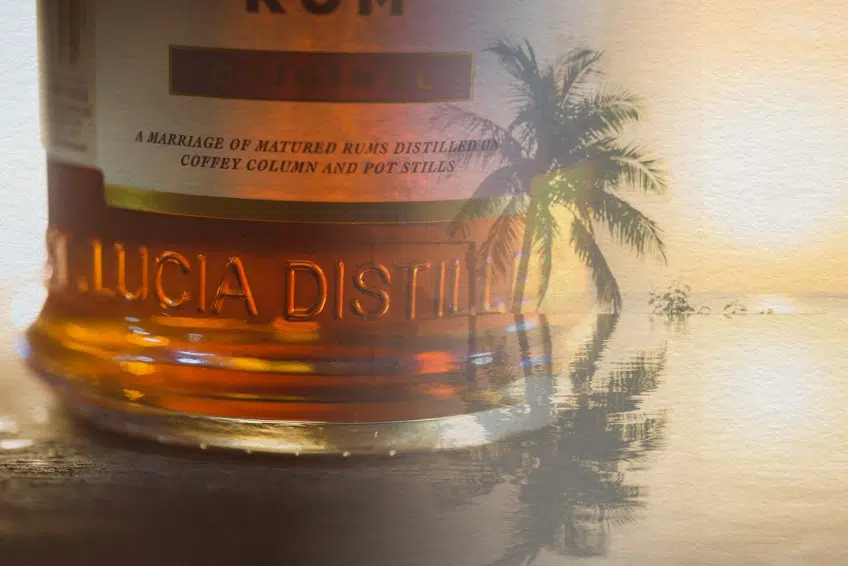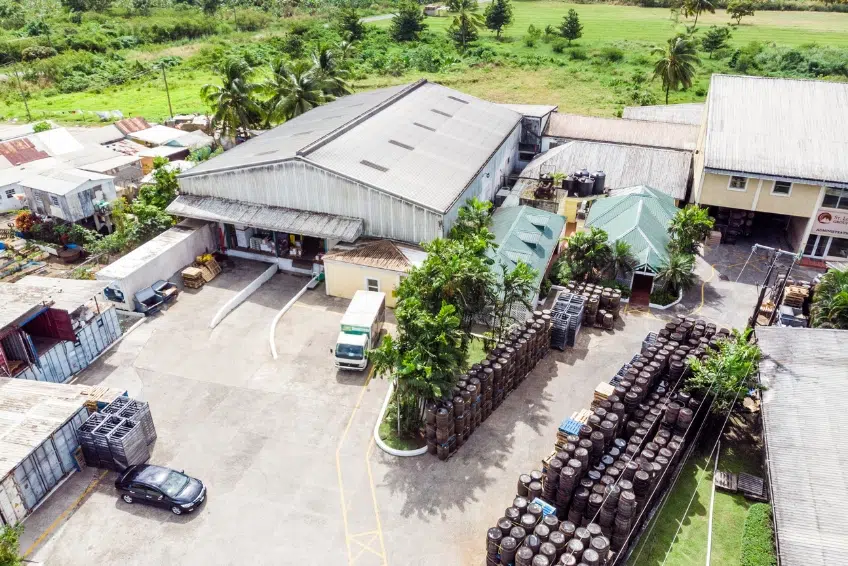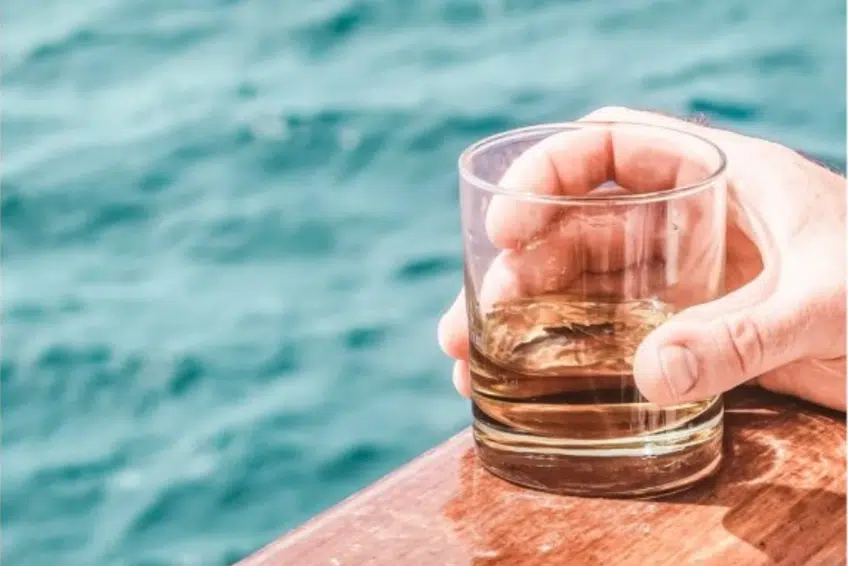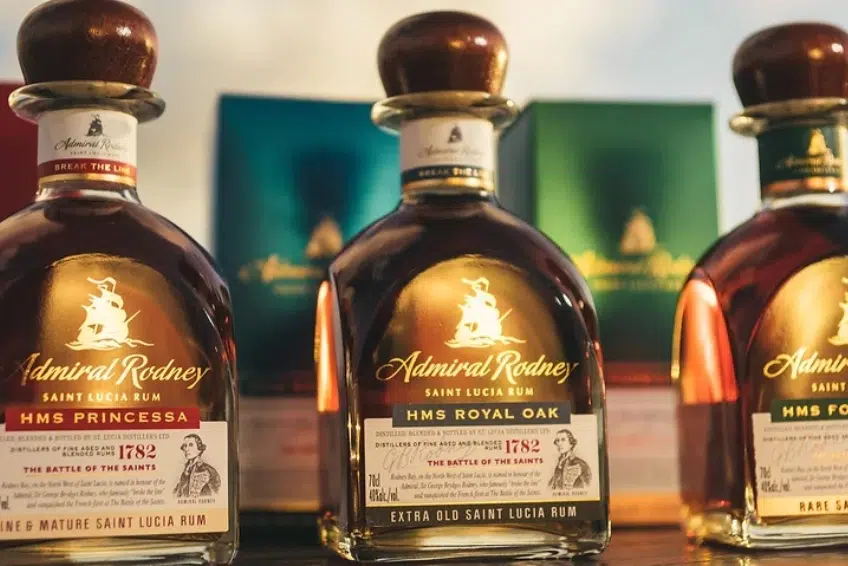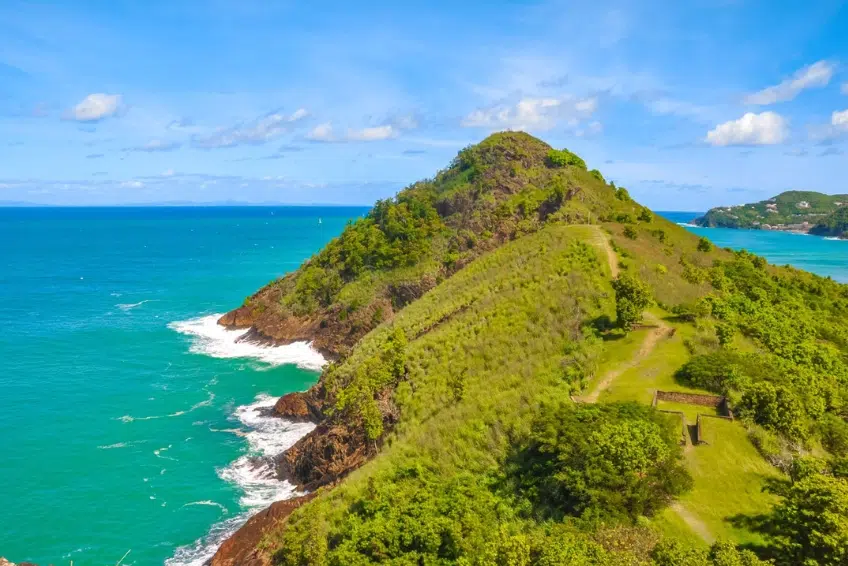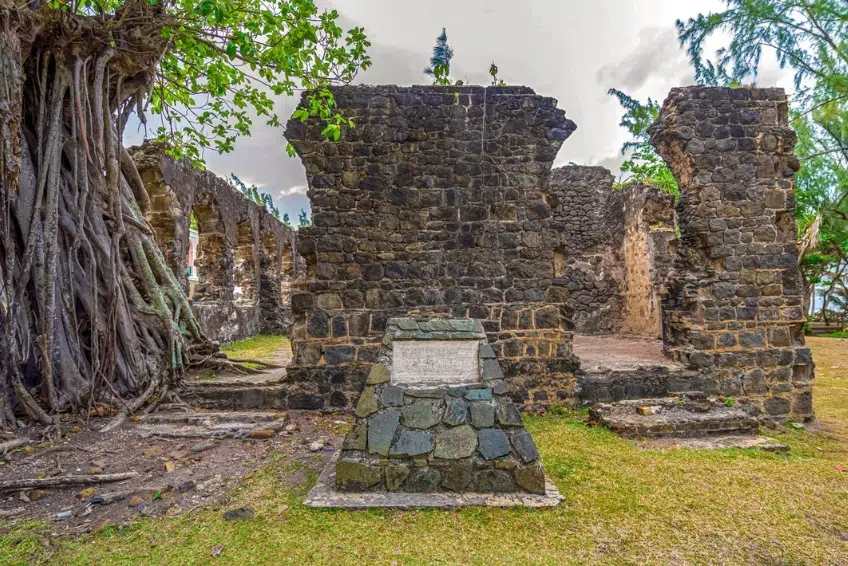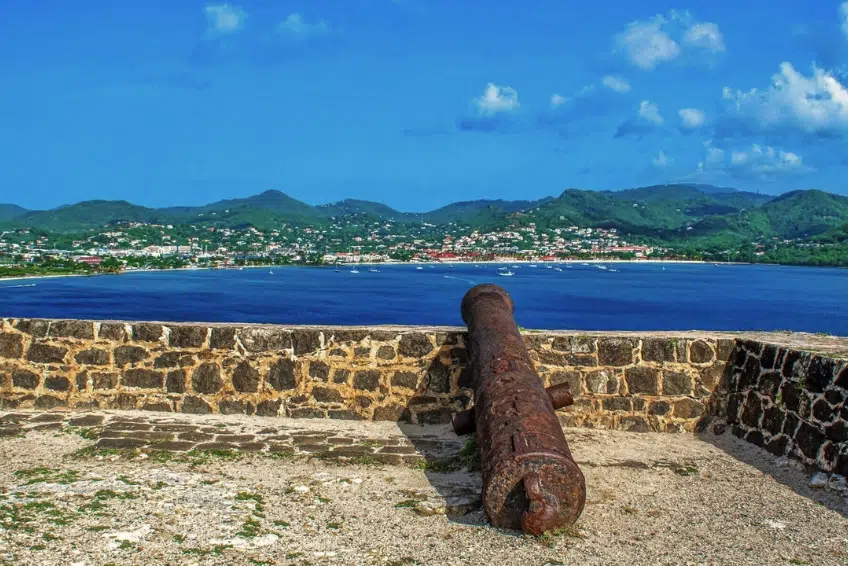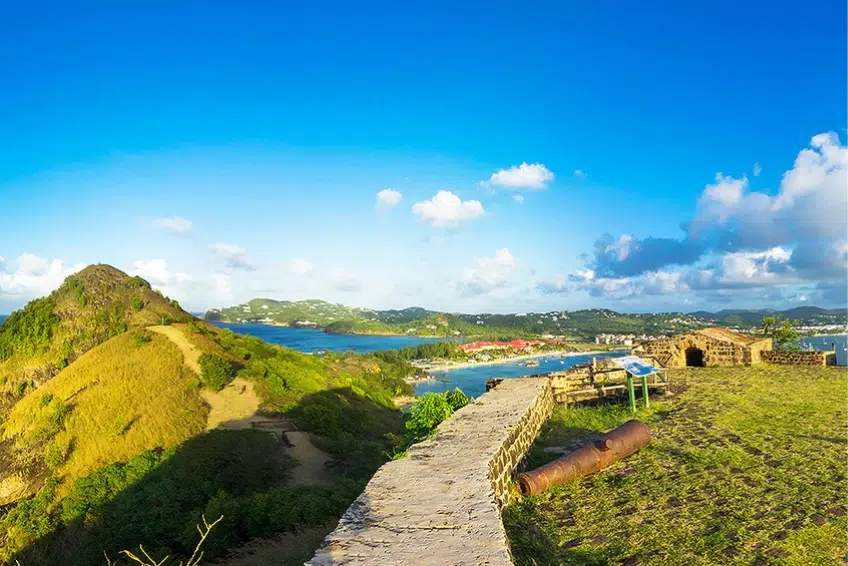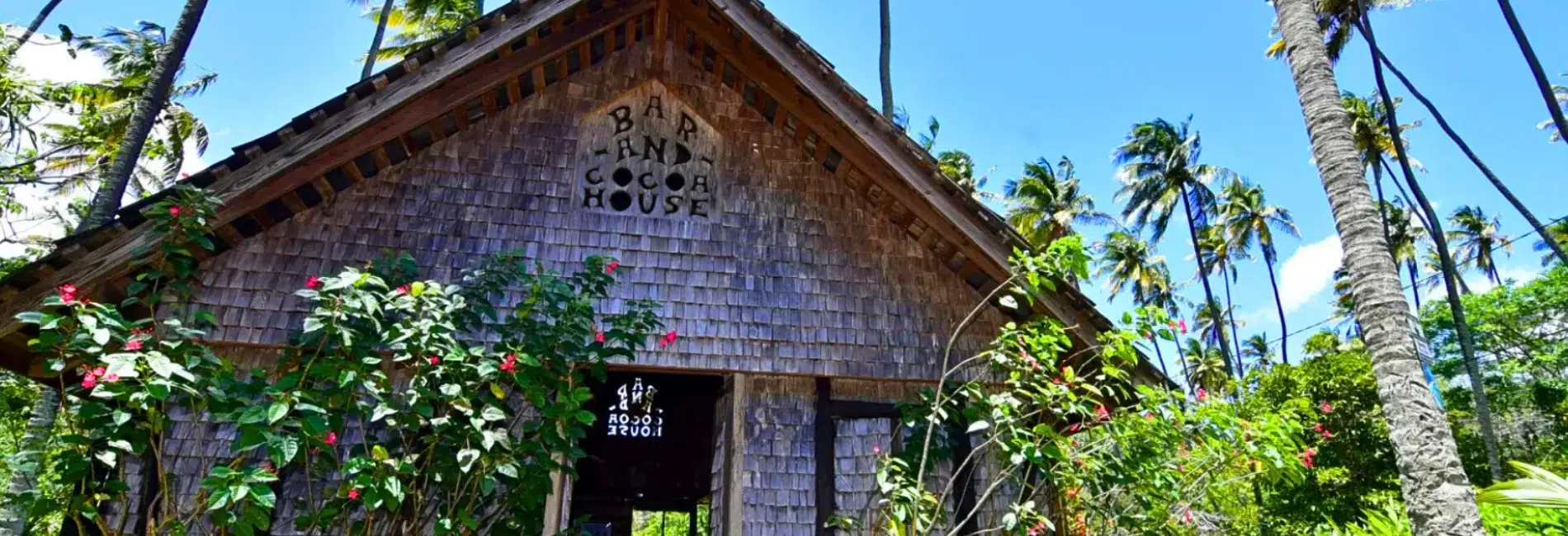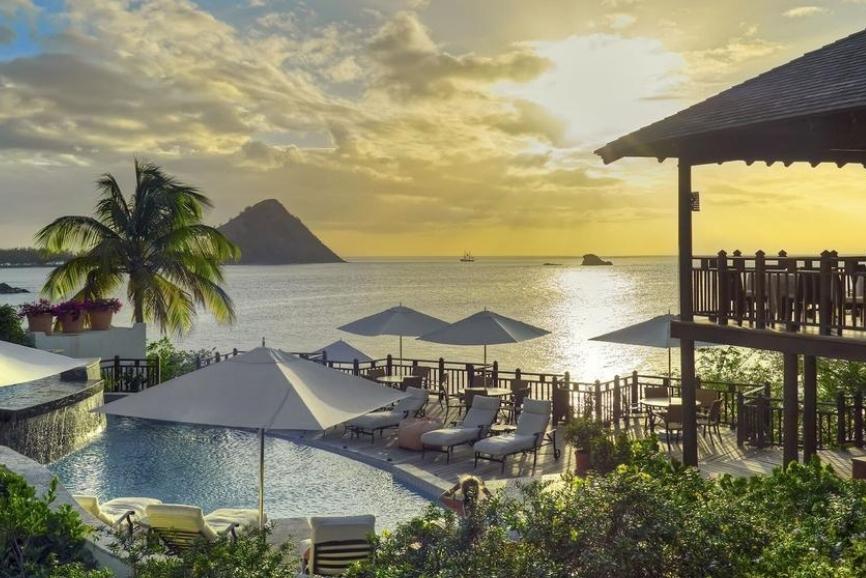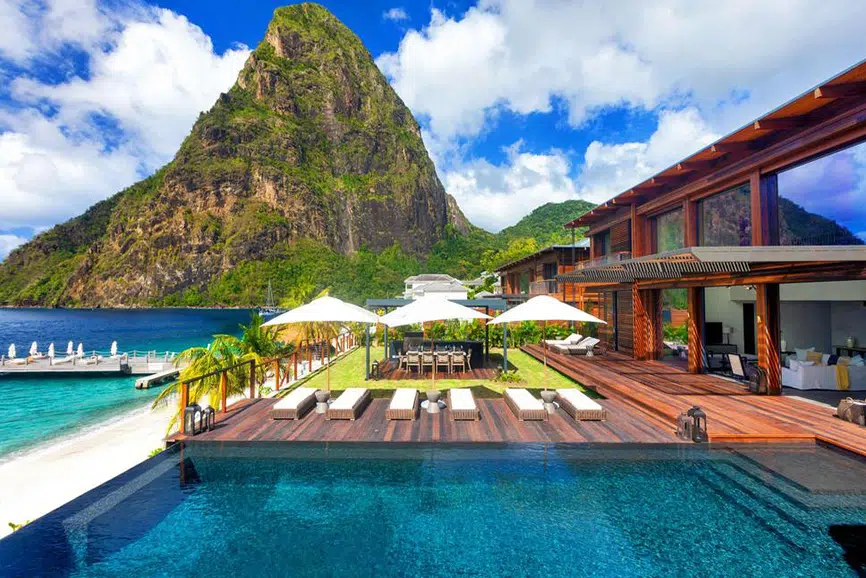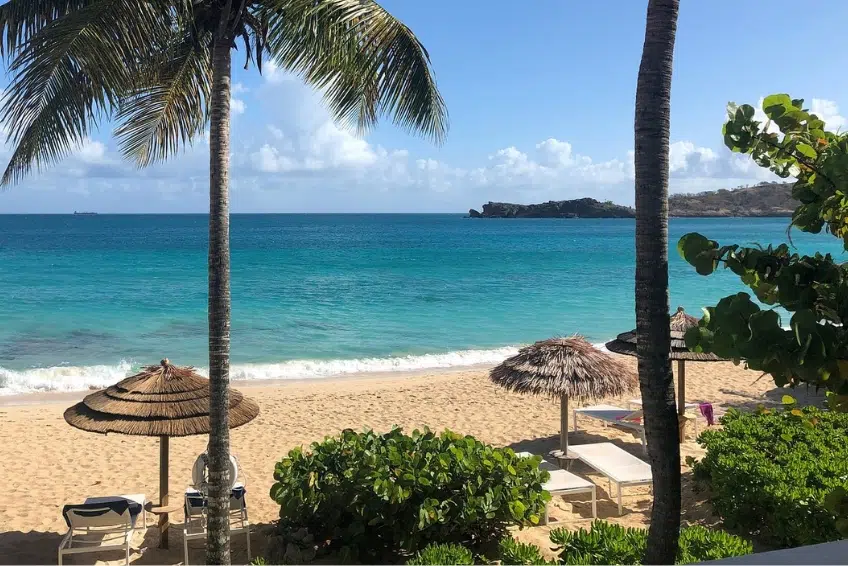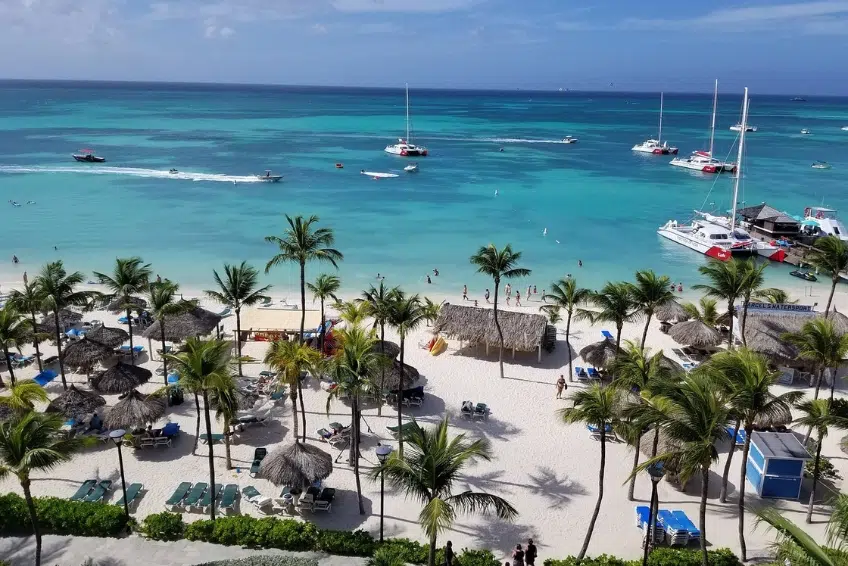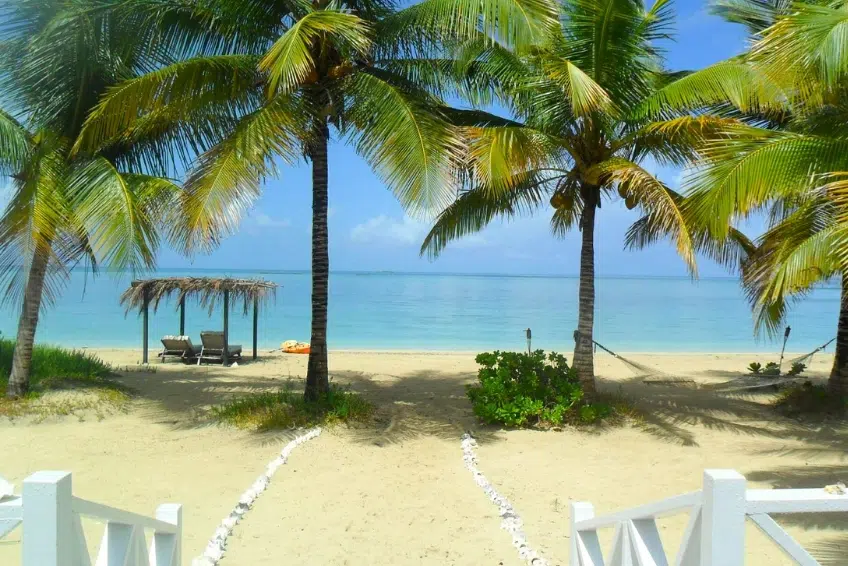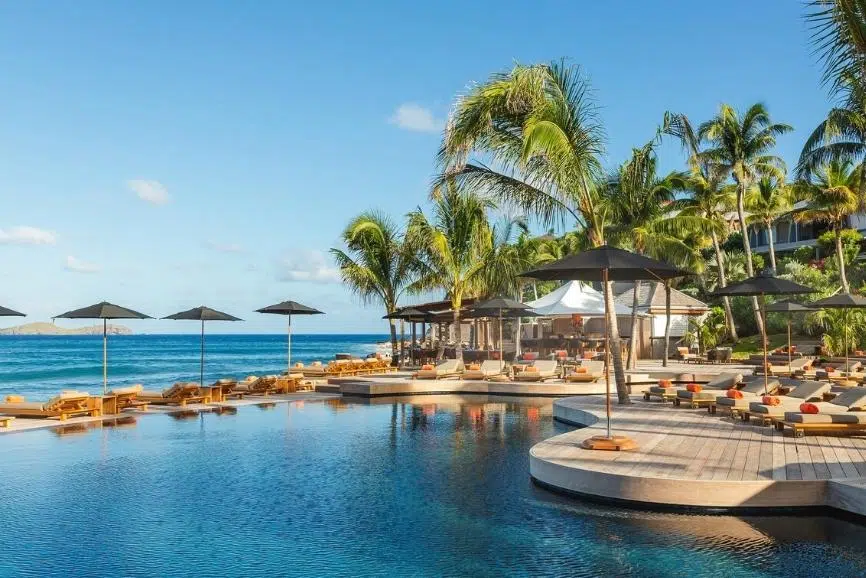
The 7 Best St. Lucia Cultural Activities
 Laura Schulthies
Laura Schulthies
 Laura Schulthies
Laura Schulthies
When you’re ready to move beyond beach loungers and resort buffets, St. Lucia reveals a rich cultural tapestry that most visitors never discover. The island’s French-African Creole heritage, centuries-old traditions, and vibrant community celebrations create authentic experiences that connect you directly to the soul of Caribbean island life. Below are seven cultural activities that we think consistently deliver meaningful connections to St. Lucian heritage, each offering something genuinely unique that you can’t replicate anywhere else in the Caribbean.
This article contains affiliate links. If you click on our links, we may earn a small commission at no extra cost to you. This helps us continue to offer free travel guides, but does not influence our recommendations in any way. Thanks for supporting independent travel content.
Contents
click to see more images
1. Authentic Food Tours with Award-Winning Local Guides
St. Lucia’s culinary scene extends far beyond resort restaurants, and the island’s award-winning food tours provide insider access to flavors, techniques, and stories that define authentic St. Lucian culture. These aren’t generic tourist experiences but intimate journeys led by born-and-raised locals who share their heritage with infectious pride and encyclopedic knowledge of traditional foodways.
Details at a Glance:
- Our top choice: Lucian Food Tours (2023 GIMIE Tourism Award winner)
- Duration: 2.5 hours for market tours, 1-2 hours for cooking classes including dining
- Price range: $64-74 USD for walking tours, varies for cooking experiences
- Age limits: All ages welcome, though walking tours are better for active participants
- Best days: Monday (Castries Market), Tuesday-Friday (Rodney Bay Tour)
- Group size: Small groups maintained for personal attention
- Unique feature: Exclusively guided by St. Lucian-born locals
Lucian Food Tours
Lucian Food Tours earned the 2023 GIMIE Tourism Award for “Independent Tour Guide of the Year” by delivering what participants consistently describe as the highlight of their St. Lucia visit. Owner Jasmine, a hospitality professional with deep island roots, ensures every guide was born and raised in St. Lucia, bringing personal stories and family recipes that transform tastings into cultural education.
The Castries Market Tour ($74 USD, Mondays only) immerses you in the capital’s historic market culture, housed in a structure dating to 1894, through five carefully selected stops. You’ll taste saltfish accras prepared using techniques brought from West Africa, sample provision ground crops that sustained communities for generations, and learn why green fig and saltfish became the national dish. The Rodney Bay Tour ($64 USD, Tuesday-Friday) explores hidden local spots tourists rarely discover independently, visiting family-run establishments where recipes pass between generations unchanged.
Each 2.5-hour experience weaves historical storytelling with authentic tastings. You’ll understand the cultural significance behind every dish, from how enslaved communities adapted African cooking techniques using available Caribbean ingredients to why certain spices appear in every St. Lucian kitchen. The experience includes all food samples and local beverages, though transportation to starting points isn’t provided.
Claudia’s Kitchen
For hands-on cooking immersion, Claudia’s Kitchen in Canaries village offers what reviewers consistently call “the best food on the island” in an authentic home setting. Chef Claudia opens her oceanview home by reservation only, teaching family recipes like jack fish in Creole coconut curry while sharing stories of St. Lucian culinary evolution. You’ll prepare meals using herbs from Claudia’s garden, learning traditional techniques like proper green seasoning preparation that requires specific ingredient ratios perfected over decades.
Small groups ensure personal attention during the 1-2 hour experience that culminates in dining together family-style. Claudia accommodates dietary restrictions and offers flexible scheduling, even opening on normally closed days for special requests. The cultural exchange extends beyond cooking as Claudia explains how economic changes affect traditional foodways and why certain dishes appear at specific celebrations.
Booking and Logistics
Tours run year-round with flexible scheduling, though advance booking proves essential during December-April peak season. Meeting points for walking tours are centrally located, though participants arrange their own transportation. For cooking classes, specific locations are provided upon booking confirmation.
Island Life Tips: We suggest arriving slightly hungry but not famished for food tours. You’ll sample substantial portions at multiple stops, and guides appreciate participants who can genuinely engage with each tasting rather than being too full to continue halfway through the experience.
click to see more images
2. Tree-to-Bar Chocolate Making at Hotel Chocolat Estate
Hotel Chocolat’s Project Chocolat at Rabot Estate transforms visitors into chocolatiers through an immersive experience that demonstrates how St. Lucia’s volcanic soil and perfect climate create some of the world’s finest cacao. This isn’t a manufactured tourist attraction but a working organic farm where traditional methods blend with modern sustainable practices.
Details at a Glance:
- Duration: 2.5 hours tree-to-bar experience plus dining time
- Price range: $124 USD adults, $62 USD children 8-11 years
- Operating schedule: Daily tours with advance booking required
- Best time: Morning tours for cooler rainforest conditions
- Includes: Farm tour, chocolate making, lunch at Cacao Cuisine restaurant
- Unique feature: Working 6-acre organic cacao farm in pristine rainforest
The Estate Experience
Daily tours begin with an exploration of cacao groves where guides explain tree grafting techniques perfected over generations and the delicate fermentation process that creates chocolate’s complex flavors. You’ll learn to identify ripe pods by sound and color, understand why Trinitario cacao varieties produce superior chocolate, and discover how St. Lucia’s volcanic soil creates unique flavor profiles impossible to replicate elsewhere.
The hands-on chocolate-making session uses traditional stone grinding methods before modern refinement, allowing you to appreciate both historical and contemporary techniques. You’ll roast beans, crack shells by hand, and grind nibs into paste using methods virtually unchanged since pre-Columbian times. The process concludes with tempering and molding your own chocolate bars using estate-grown cacao.
Rabot Restaurant
The experience includes lunch at the on-site Rabot Restaurant featuring chocolate-infused dishes that showcase estate-grown cacao in savory applications. The menu changes seasonally but typically includes cacao-rubbed fish, chocolate mole-inspired sauces, and desserts highlighting single-origin chocolate’s complex flavors. The restaurant’s elevated position provides stunning rainforest views while you dine.
Important Info
Located 45 minutes from Castries in Soufrière’s hotel district, the estate operates year-round with the rainforest canopy providing natural cooling even during summer months. The 6-acre property maintains sustainable farming practices while providing crucial employment to surrounding communities, making visits both culturally significant and economically important to the region.
The gift shop offers factory prices on exclusive estate chocolates unavailable elsewhere, including limited-edition single-origin bars that showcase specific harvest seasons. Shipping arrangements can be made for larger purchases, though most visitors find the chocolate travels well in carry-on luggage.
Island Life Tips: We suggest wearing comfortable walking shoes and bringing insect repellent for the farm tour portion. The rainforest setting means encountering actual wildlife, so avoid bright colors that attract insects and consider long pants despite the heat for protection against mosquitoes and vegetation.
click to see more images
3. Historic Plantation Tour at Morne Coubaril Estate
Morne Coubaril Estate offers St. Lucia’s most comprehensive historical experience, combining working agricultural demonstrations with adventure activities on grounds continuously cultivated for over 250 years. This 18th-century sugar and cocoa plantation provides authentic insights into Caribbean colonial history while showcasing traditional techniques still used today.
Details at a Glance:
- Duration: 2-4 hours, depending on the package selected
- Price range: $11 USD estate entrance, $75 USD with zipline add-on, $115 USD full package with lunch
- Operating hours: 8:30 AM – 5:00 PM daily
- Age restrictions: All ages welcome, though hilly terrain limits mobility access
- Best package: 3-in-1 Experience (plantation tour, zipline, lunch)
- Unique feature: Working plantation with 250+ years continuous cultivation
The Historical Experience
The estate tour showcases traditional processing methods for sugar cane, cocoa, coconut, and cassava that remain largely unchanged since colonial times. You’ll witness coconut dehusking using techniques passed down through generations, sample fresh sugar cane juice from the original mill, and observe cocoa fermentation processes in authentic drying houses. The demonstration explains how various crops sustained plantation communities and why certain techniques were developed specifically for Caribbean conditions.
The historical village replica features traditional case en bwa (wooden houses), demonstrating how enslaved workers and later free laborers lived. Guides explain the evolution from sugar monoculture to diverse crop cultivation after emancipation, providing context for understanding modern St. Lucian agriculture. The authentic atmosphere means encountering actual farmers tending crops rather than staged demonstrations.
Adventure Components
The 3-in-1 Experience Package adds zipline adventures through the canopy with spectacular Petit Piton views, plus rum and chocolate tastings featuring estate-produced products. The zipline component provides adrenaline, while the plantation tour offers cultural depth, creating a well-rounded experience that satisfies different interests within travel groups.
The package includes an authentic Creole buffet lunch prepared using traditional cooking methods and local ingredients grown on the property. The meal typically features provisions (root vegetables), fresh fish prepared Creole-style, and seasonal fruits harvested from estate grounds.
Practical Considerations
Located 10-15 minutes from Soufrière town, the estate easily combines with nearby Sulphur Springs visits for full-day cultural immersion. The hilly terrain with narrow pathways limits accessibility for mobility-impaired visitors, though multiple experience levels accommodate different physical abilities. The working plantation atmosphere means the weather can affect certain demonstrations, particularly during the rainy season when some outdoor activities may be modified.
Island Life Tips: We suggest visiting early in the day when demonstrations are most active and before the afternoon heat builds. The estate’s gift shop sells chocolate and coffee produced on the property, making it an excellent place to purchase authentic souvenirs that directly support the local operation.
click to see more images
4. Gros Islet Friday Night Street Party
Every Friday except Good Friday, Gros Islet village transforms into St. Lucia’s most famous cultural celebration. A tradition spanning over 50 years that locals call “the Jump Up.” This authentic community gathering provides unfiltered access to contemporary St. Lucian social culture in its most natural setting.
Details at a Glance:
- Duration: Sunset to dawn (6 PM – 6 AM), peak activity 9 PM – 1 AM
- Cost: Free entry, food and drinks purchased from vendors
- Schedule: Every Friday except Good Friday
- Best arrival time: 8-9 PM for optimal food selection and energy
- Transportation: Limited parking, arrange taxi pickup times in advance
- Unique feature: 50+ year tradition blending locals and tourists authentically
The Cultural Experience
Starting at sunset around 6 PM and continuing until dawn, Dauphin Street fills with grilled seafood vendors, powerful sound systems pumping soca and dancehall, and a jubilant mix of locals unwinding after work and tourists seeking authentic Caribbean nightlife. The party peaks between 9 PM and midnight when the crowd swells and the energy becomes electric.
Street vendors line up offering grilled whole red snapper for around $20 EC, lobster in garlic butter, jerk chicken, and local specialties like grilled conch. Duke’s Place earns consistent praise for the freshest fish, though arriving by 8 PM ensures the best selection before popular items sell out. Ice-cold Piton beers cost $5 EC, while Aunty Jane’s legendary rum punch packs enough kick to fuel hours of dancing.
Fire performers entertain crowds between the various DJ stations, each competing to draw the biggest dancing crowd with the latest soca hits mixed with classic reggae and calypso. The authentic community celebration welcomes respectful tourists who come to lime (Caribbean term for socializing) rather than simply observing.
Safety and Logistics
The atmosphere remains generally safe within the main party area, though standard nighttime precautions apply: avoid flashing expensive jewelry, stay on well-lit streets, and keep valuables secure while dancing. Transportation requires planning since parking is extremely limited. Most visitors arrange taxi pickup times in advance or join organized tours that include round-trip transport from major hotels.
The party operates rain or shine, with covered areas providing shelter during brief tropical showers. Comfortable shoes prove essential for dancing on uneven streets, and bringing EC currency avoids ATM lines when purchasing food and drinks from vendors.
Cultural Significance
The Jump Up represents authentic St. Lucian social culture without tourist modifications. You’ll experience how locals celebrate the end of the work week, witness the latest dance moves before they spread throughout the Caribbean, and understand why music and community gathering remain central to island life. The mix of generations dancing together showcases cultural continuity rarely visible in other tourist settings.
Island Life Tips: We suggest starting your evening with dinner at one of the seafood vendors rather than eating before arrival. The grilled fish represents some of the island’s best informal dining, and participating in the food culture enhances your acceptance within the community celebration. Also, learn a few basic soca dance moves beforehand, as locals appreciate visitors who participate.
click to see more images
5. Traditional Artisan Crafts in Choiseul Village
Choiseul district, known as St. Lucia’s leading craft center, preserves traditional artisan techniques passed down from Amerindian inhabitants through generations of Creole craftspeople. This authentic cultural experience showcases living traditions under threat from modernization, making visitor support crucial for preservation.
Details at a Glance:
- Our choice for authentic crafts: Choiseul Art Gallery
- Duration: 2-4 hours for gallery visits, half-day for hands-on workshops
- Operating hours: Tuesday-Saturday 10 AM-4 PM (closed August-September)
- Price range: Gallery visits free, pottery workshops $50-90 USD
- Best experiences: Traditional pottery making, basket weaving, wood carving
- Transportation: 1 hour from Castries, rental car recommended
- Unique feature: Direct connection to pre-Columbian traditions
Choiseul Art Gallery
River Doree’s Choiseul Art Gallery, run by artists Hattie and Leo Barnard, showcases exclusively local artists in a converted farm setting. Paintings capture St. Lucian landscapes using techniques adapted to Caribbean light and color, while the collection includes coconut and calabash crafts, traditionally woven baskets using sisal and khus khus grass from the rainforest, and jewelry incorporating local materials.
Prices remain remarkably reasonable compared to cruise port galleries, with proceeds directly supporting community artists rather than middlemen. The gallery setting allows conversations with artists about their techniques, inspiration from St. Lucian landscapes, and challenges facing traditional crafts in a modernizing economy.
Keramik Saint Lucia
For hands-on experiences, Keramik Saint Lucia offers pottery workshops where participants work with authentic St. Lucian clay under artist Amanda’s guidance. The several-hour experience includes wheel throwing or hand-building instruction, garden tours featuring tropical fruits, and insights into how local clay’s unique properties influence traditional techniques.
Sessions accommodate beginners through experienced potters, with finished pieces available for shipping. The cultural exchange extends beyond crafts as participants learn how economic pressures threaten these traditions as younger generations pursue tourism careers, making support for these artisans crucial for cultural preservation.
Traditional Pottery Making
At the Choiseul Arts & Crafts Centre, you can observe pottery making using 2,000-year-old techniques, with clay dug from lands in Gros Piton’s shadow, hand-kneaded, shaped without pottery wheels, and fired in open bonfires to create unglazed vessels called canawí. These traditional coal pots, essential for St. Lucian cooking, represent a direct link to West African cookstove traditions brought by enslaved peoples.
Master potters demonstrate the complete process from clay preparation through firing, explaining how local clay’s unique properties influence traditional techniques. The unglazed pottery’s functionality for slow-cooking traditional dishes like oil down and green fig connects contemporary St. Lucian cuisine to ancient cooking methods.
Cultural Significance
The artisan traditions in Choiseul connect directly to the island’s earliest inhabitants, with techniques and materials usage showing remarkable continuity across centuries. Understanding these crafts provides insights into how Caribbean communities adapted indigenous methods while incorporating influences from African and European traditions brought through colonization.
Island Life Tips: We suggest combining gallery visits with purchasing directly from artisans rather than hotel gift shops. Your money goes entirely to the creators, and artists often provide background stories about their pieces that enhance appreciation. Also, visit during weekday mornings when artisans are most active and available for conversation about their techniques.
click to see more images
6. St. Lucia Distillers' Rhythm of Rum Heritage Experience
St. Lucia Distillers’ Rhythm of Rum Tour provides year-round access to the island’s last remaining distillery, where traditional rum-making techniques preserve three centuries of Caribbean cultural heritage. This authentic experience operates in Roseau Valley, combining historical education with hands-on learning about the spirit that shaped Caribbean civilization and continues defining St. Lucian identity.
Details at a Glance:
- Duration: 1 hour guided tour with extended tasting time
- Price range: $12 USD adults, reduced rates for ages 12-15
- Operating schedule: Monday-Friday 9:00 AM – 3:00 PM (weekends by group arrangement)
- Group discounts: Available for 15+ people, weekend tours require an advance group booking
- Best time: Mid-morning for optimal lighting and cooler temperatures
- Unique feature: The Caribbean’s most comprehensive rum heritage education
The Distillery Experience
The tour begins in a reconstructed ship’s hold that recreates the conditions enslaved peoples endured during the Middle Passage, providing essential context for understanding rum’s complex role in Caribbean history. This powerful opening connects visitors to the human cost behind the sugar and rum industries that built colonial wealth while devastating African and indigenous populations.
You’ll explore the complete rum-making process from cane crushing through fermentation to distillation using copper pot stills that have operated continuously since 1972. The facility maintains traditional methods alongside modern quality controls, demonstrating how authentic Caribbean rum differs from mass-produced spirits. The educational component explains how different aging processes, barrel types, and blending techniques create distinct flavor profiles that reflect local terroir.
Chairman’s Reserve Heritage Collection
The guided tasting includes 17+ varieties ranging from white overproof rum used in traditional cooking to aged reserves that showcase the complexity possible in Caribbean spirits. You’ll sample unique local infusions, including Bois Bande bark rum, traditionally used for its purported medicinal properties, and spiced rums incorporating indigenous botanicals passed down through generations of local rum makers.
The experience includes learning traditional rum cocktail preparation techniques and understanding why specific rums pair with certain St. Lucian dishes. The cultural education extends beyond drinking to encompass rum’s role in celebrations, religious ceremonies, and daily life throughout the Caribbean region.
Historical and Cultural Context
The tour provides comprehensive education about rum’s central role in Caribbean economic development, from colonial sugar plantations through modern craft distilling. You’ll understand how the Barnard family’s four-decade stewardship has maintained traditional techniques while adapting to contemporary market demands and environmental concerns.
The facility showcases artifacts from St. Lucia’s distilling history and explains how rum production techniques traveled throughout the Caribbean, creating regional variations that reflect local ingredients and cultural preferences. The presentation balances celebration of craftsmanship with honest discussion of the industry’s historical connections to slavery and colonialism.
Practical Information
Located in Roseau Valley, the distillery sits 20 minutes from Castries and provides easy access from both northern and southern accommodations. The facility operates Monday through Friday with tour times flexible within business hours, though morning visits offer the best combination of comfortable temperatures and optimal facility activity.
Group bookings for 15+ people receive discounted rates and can arrange weekend tours with advance notice. Individual visitors are welcome weekdays during operating hours. The experience accommodates all ages, though alcohol tastings are restricted to adults 18+. The gift shop offers exclusive bottlings unavailable elsewhere, including limited releases and distillery-only expressions.
Island Life Tips: We suggest combining the distillery tour with nearby Castries Market visits for a full cultural day exploring both traditional crafts and culinary heritage. Also, purchase unique local infusions like Bois Bande or spiced varieties directly from the distillery for authentic souvenirs that capture St. Lucian flavor profiles impossible to find outside the Caribbean.
click to see more images
7. Pigeon Island National Landmark Historical Exploration
This 44-acre National Landmark operated by the Saint Lucia National Trust tells the island’s complex colonial story through well-preserved 18th-century military fortifications, archaeological sites, and interpretive programs that explain St. Lucia’s strategic importance in Caribbean maritime history.
Details at a Glance:
- Duration: 2-4 hours for complete exploration
- Admission: $10 USD adults, $3 USD children
- Operating hours: 9:30 AM – 5:00 PM daily (Tuesdays from 11:00 AM)
- Best time: Early morning or late afternoon for optimal light and cooler temperatures
- Guided tours: EC$59 for groups up to 7 people
- Unique feature: 18th-century military fortifications with commanding sea views
Fort Rodney and Military History
The strategic importance of this former island (artificially joined to the mainland in 1972) becomes clear when climbing to Signal Peak at an elevation of 359 feet. Ships could be spotted hours before reaching St. Lucia’s shores, making this location crucial for controlling the channel between St. Lucia and Martinique during colonial conflicts between France and Britain.
Fort Rodney’s commanding views extend to Martinique on clear days, demonstrating why the British invested heavily in fortifications here. The preserved military ruins date from 1778, with officers’ quarters from 1824 and barracks foundations from 1808 providing authentic glimpses into colonial military life. Cannon emplacements show how artillery could control shipping lanes that remain vital Caribbean trade routes.
Museum and Archaeological Exhibits
The small but informative museum operates Monday-Friday, showcasing artifacts from Amerindian settlement through pirate occupation by François Le Clerc “Jambe de Bois” to its role in 18th-century French-British conflicts. Recent archaeological discoveries reveal continuous human habitation spanning over 1,000 years, with displays explaining how different cultures utilized this strategic location.
Guided tours provide crucial context often missed by self-guided visitors, explaining how military engineering adapted to Caribbean conditions, why certain fortification designs proved effective against naval bombardment, and how the site influenced broader Caribbean colonial strategy. The interpretive programming connects historical events to contemporary St. Lucian culture and regional politics.
Natural and Cultural Features
The moderately challenging 20-minute hike to Signal Peak includes scrambling over boulders that require sturdy shoes with good grip. The trail passes through different vegetation zones, from coastal scrub to elevated forest, demonstrating how Caribbean islands create distinct microclimates within small areas.
Two small beaches provide cooling opportunities after hiking, with calm waters protected by the headland formation. The beaches showcase how natural harbors influenced historical settlement patterns and continue attracting contemporary recreational use. The contrast between military ruins and peaceful beach settings illustrates how historical sites adapt to modern cultural functions.
Contemporary Cultural Role
Pigeon Island transforms from a historical site to a cultural venue during major events, particularly hosting Saint Lucia Jazz Festival performances where 18th-century military ruins provide dramatic backdrops for contemporary musical performances. This dual function demonstrates how historical preservation can support living culture rather than creating static museum experiences.
The on-site restaurant serves local dishes at reasonable prices, making this a full half-day excursion when combined with beach time and historical exploration. Recent restoration work has improved trail safety while preserving authentic military architecture, ensuring both visitor safety and historical integrity.
Island Life Tips: We suggest combining Pigeon Island visits with nearby Rodney Bay activities for full-day northern St. Lucia exploration. The landmark’s proximity to hotels, restaurants, and beaches makes it an ideal anchor for understanding how historical sites integrate with contemporary St. Lucian life. Also, bring a hat and water for the Signal Peak hike – the elevated exposure provides spectacular views but limited shade.
Essential Planning Information for Cultural Activities
Seasonal Timing and Cultural Calendar
The dry season from December through April provides optimal weather for cultural activities but brings peak tourist crowds and higher prices. May-June offers excellent compromise conditions with good weather, moderate crowds, and the added benefit of Jazz Festival programming. Hurricane season (July-October) sees fewer visitors and lower prices, though afternoon rains are common and may affect outdoor activities.
October’s Creole Heritage Month adds special cultural programming island-wide, including traditional food festivals, craft demonstrations, and historical commemorations. July’s Carnival creates incomparable cultural immersion opportunities with street parades, calypso competitions, and community celebrations that welcome respectful tourist participation.
Transportation and Logistics
Cultural sites are spread between northern and southern regions, requiring strategic transportation planning. Rental cars provide maximum flexibility, but mountain roads with sharp switchbacks intimidate many drivers. Consider hiring a driver-guide for full-day cultural explorations ($150-200 USD) – local guides provide cultural context while navigating safely.
Taxis offer reliable point-to-point service, but negotiate return pickups for remote locations like Choiseul or Morne Coubaril. Many cultural experiences now appear in cruise excursion packages, though independent visits allow more time for authentic interactions with local practitioners.
Cultural Etiquette and Respect
Successful cultural exploration requires adopting appropriate behavior that shows respect for local traditions and communities. Learning basic Kwéyòl greetings opens doors and demonstrates cultural interest. Always ask permission before photographing individuals, particularly at community events or artisan workshops where people may not expect tourist photography.
Support local economies by purchasing directly from artisans rather than through hotel shops to make a more meaningful economic impact. Engage with cultural practitioners as knowledgeable experts rather than service providers – many have college educations and extensive travel experience despite working in traditional crafts or informal tourism.
Booking Strategies and Costs
Estate tours, cooking classes, and pottery workshops require advance reservations, especially December-April when accommodation scarcity affects all tourist services. Street parties, markets, and some galleries welcome drop-ins, though calling ahead ensures they’re operating normally.
Budget $50-75 USD per person for guided cultural experiences, $100-150 for hands-on workshops, and $25-50 for self-guided historical sites. Food tours and cooking classes provide excellent value by including substantial meals along with cultural education. Many experiences offer group discounts for 4+ participants.
Health and Safety Considerations
Cultural activities generally pose minimal safety risks, though basic precautions enhance comfort and security. Comfortable walking shoes prove essential for historical sites, plantation tours, and market visits. Sun protection and insect repellent are necessary year-round, particularly for outdoor activities in southern rainforest areas.
Street parties and night events require standard urban safety awareness: travel in groups, avoid displaying expensive items, and arrange transportation in advance. Most cultural practitioners speak English fluently, though learning key Kwéyòl phrases enhances interactions and shows cultural respect.
Making the Most of Your Cultural Immersion
St. Lucia’s cultural activities provide authentic connections to Caribbean heritage when approached with genuine curiosity and respect for local traditions. The island’s cultural authenticity shines brightest when visitors step beyond tourist zones into experiences run by St. Lucians deeply connected to their heritage, whether award-winning food tour guides, multi-generation artisans, or community festival organizers.
Success requires abandoning rigid schedules for “island time” flexibility, engaging with locals as cultural ambassadors rather than service providers, and supporting community-based tourism that directly benefits St. Lucian families. The rewards justify the effort – learning traditional pottery techniques connects you to pre-Columbian heritage, understanding why specific dishes appear at certain celebrations reveals cultural values, and dancing at Gros Islet creates memories no resort show can match.
These seven cultural experiences transform St. Lucia from a beautiful destination into a deeply understood place where visitors become temporary participants in an enduring, vibrant culture. By choosing activities that showcase living traditions rather than performed culture, you’ll discover the authentic St. Lucian story that continues evolving while honoring its remarkable multicultural roots.
CARIBBEAN
Islands, Beaches, Cuisine and More
Nestled in the Lower Antilles is the beautiful green Caribbean island of St. Lucia. Famous for its towering Pitons, St. Lucia is home to jungles, pristine beaches, endless activities and more. Here is our guide to the best of St. Lucia.
St. Lucia is a picture perfect island in the northern Caribbean. With towering green Pitons, white sand beaches and turquoise water, there's something for everyone. Here are some of the best hotels on St. Lucia.
St. Lucia has a wide variety of restaurant and cuisine options available. From Castries to Soufriere, visitors can sample international cuisine as well as local dishes and fresh seafood aplenty. Here is our guide to the best restaurants in St. Lucia.
Packing for beach vacations shouldn’t be hard, so we’ve put together a unique beach vacation packing list to help and included some of our favorite items. From clothes to electronics and everything in between, we've got all the tips to make packing a breeze.
Whether you’re searching for family relaxation or some romance, each of these all-inclusive resorts in Antigua will deliver, with a dash of Caribbean luxury, and the perfect setting for your dream tropical vacation.
Aruba has a wide selection of excellent all inclusive resorts including 5-star luxury, family friendly, adults only and budget friendly options. Here is our guide to the best Aruba all inclusive resorts!
The Bahamas has everything you could desire for a perfect tropical getaway; a warm climate, sparkling blue waters and friendly locals. Here are the best all-inclusive resorts in the Bahamas that you should definitely look into.
Welcome to the ultimate guide to Cayman Islands all inclusive resorts! Whether you’re looking for a family-friendly resort or a romantic adults-only retreat, we’ve got you covered with this list of the best all inclusive resorts in the Cayman Islands.
The Dominican Republic is known for its picturesque beaches, lush jungles, rich cultural heritage and friendly locals. Here is our list of the best Dominican Republic all inclusive resorts to make your visit to the Dominican Republic incredible.
Welcome to the ultimate guide to Jamaica all inclusive resorts! Whether you’re looking for a family-friendly resort or a romantic adults-only retreat, we’ve got you covered with this list of the best all inclusive resorts in Jamaica!
Are you ready for that Puerto Rico getaway? This guide to the best all inclusive resorts in Puerto Rico will help you to choose the perfect resort for your relaxation escape.
St. Bart’s offers a refined and intimate atmosphere for a bevy of high-class travelers, including many celebrities. We’ve compiled the top six resorts in St. Bart’s for various budget types that you should check out.



